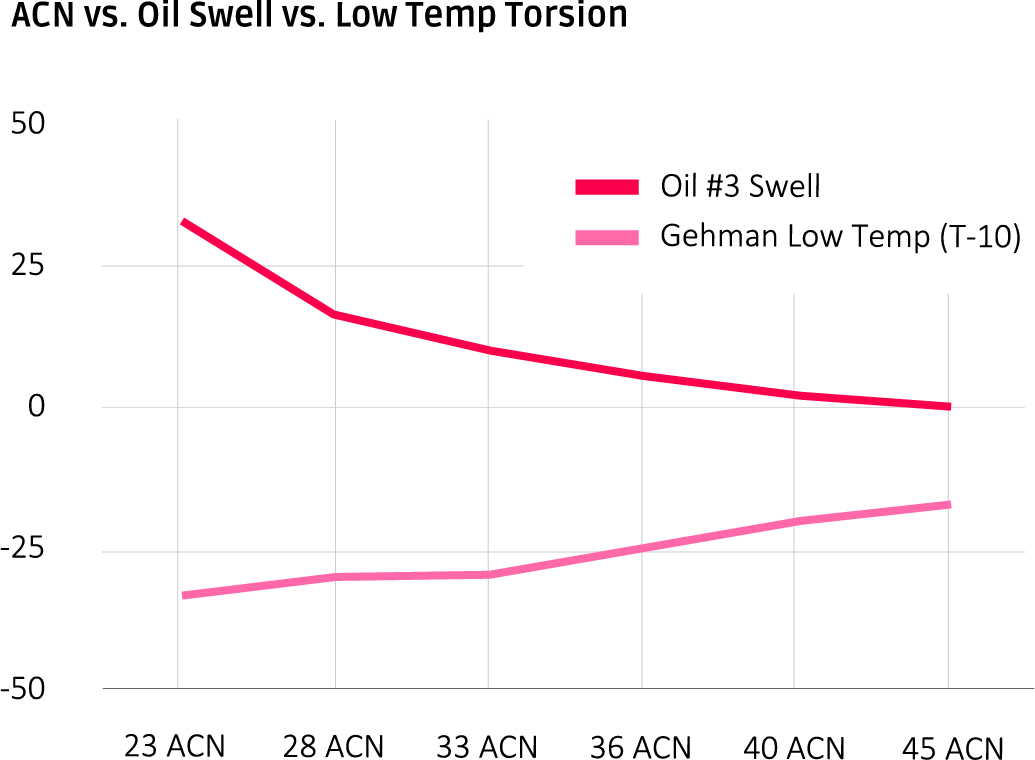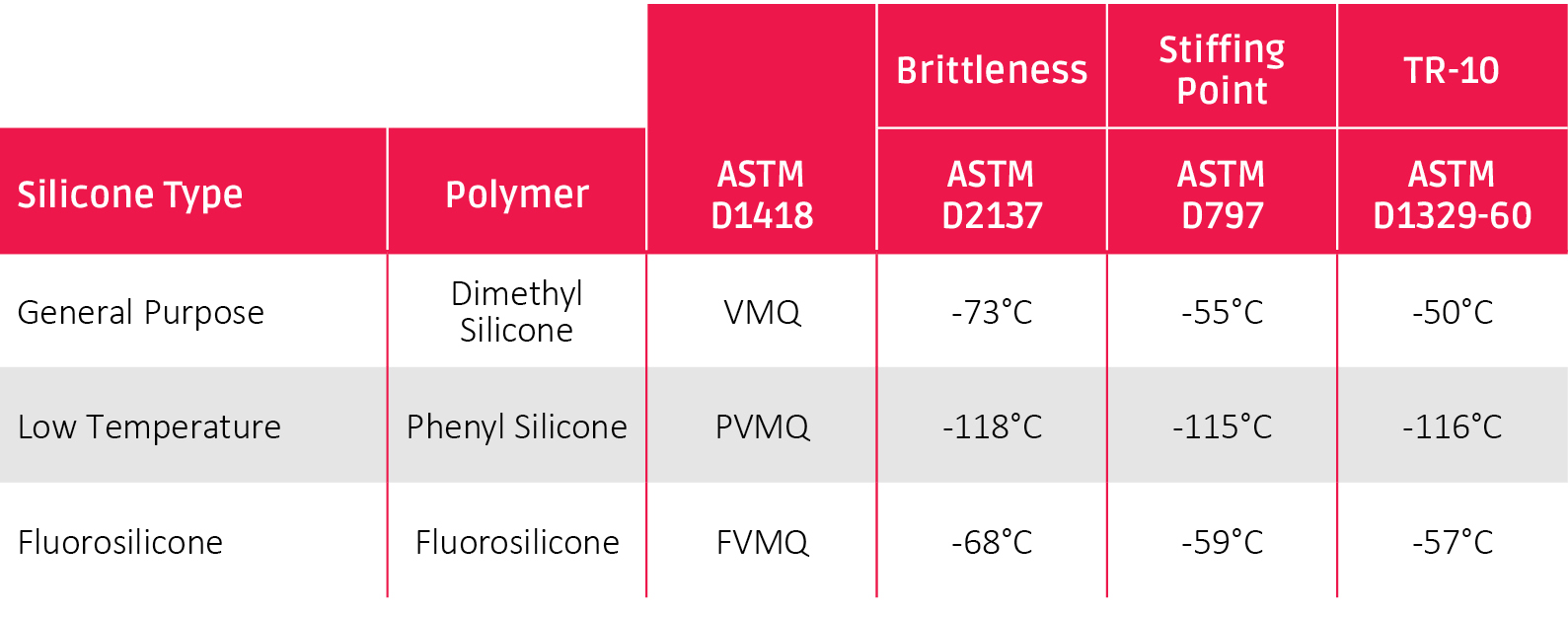As we come into the winter season, it’s a good time to talk about the low-temperature performance of different rubber types. We know that a rubber polymer is very important to the overall properties of a rubber compound. This is especially true when it comes to capabilities at low temperatures. Of course, the polymer is not the only component of a rubber formulation— plasticizers, fillers systems and curatives are also important. In this blog, we’ll focus on the low-temperature performance of three common rubber polymers: Nitrile Rubber (NBR), Silicone (SL) and Fluorocarbon (FKM).
Nitrile Rubber (NBR)
Nitrile rubber polymer is a blend of acrylonitrile (ACN) and polybutadiene polymers. The higher ACN the better, the oil and fuel resistance. Lower ACN results in better low-temperature performance. Typically, ACN levels can range from 19% to 50%. For example, low volume swell fuel compounds typically use a 40% to 50% ACN, while standard compounds use 33% to 36% ACN. Low-temperature polymers require the least amount, using 19% to 23% ACN.
It is always important to balance oil and fuel swell with low-temperature performance depending on your application. Below is a chart that shows this relationship with ACN levels. HNBR compounds have similar ACN ranges and performance.
Silicone (SL)
There are three common polymers used to formulate silicone: Dimethyl (VMQ), Phenyl (PVMQ), and Fluorosilicone (FVMQ). The table below states the brittleness points at low temperatures for each polymer.
For a silicone compound, you will typically find a base polymer, silica as filler and curative. There is no plasticizer used for silicone, so the temperature range is ultimately dependent on the polymer. Fluorosilicone is used when an application needs more fuel and oil resistance.
Fluorocarbon (FKM):
Fluorocarbons have often been referred to as Viton™ as a generic material term. Viton™ is a registered trade name for Chemours FKM polymers, and there are a few different FKM polymer manufacturers that make similar base polymer types. As with all rubber compounds, FKM rubber formulations consist of a polymer, filler and curative. Calling out a specific base polymer is not a good way to add a material specification to a print, since this method requires more compounding. Similarly to silicone, plasticizers are not typically added to these formulations. Since these compounds are normally post-cured at elevated temperatures, most plasticizers would ultimately burn off.
ASTM D1418 designates FKM as four different types. Listed is the corresponding Chemour polymer that would be used in the formulation for reference:
Type 1: Dipolymer FKM (Viton A®)
Type 2: Terpolymer FKM (Viton F®)
Type 3: Low Temp FKM (Viton GLT®)
Type 5: (Viton ETP®)
For static applications, type 1 and type 2 can typically withstand temperatures down to -25℃. Type 3 will hold down to -40℃, and type 5 is capable of withstanding down to -15℃. Additionally, there are new polymers that are not classified that can withstand -60℃. These are special polymers that are much more expensive than standard compounds.
If you have any questions about low-temperature polymers, Apple Rubber is equipped with experienced polymer chemists that can work with you to provide the best compound for your application. We do not sell raw material or provide formulation, however, we will work with you to develop a compound that meets your specifications and mold a finished part for your application. Contact an engineer today.


